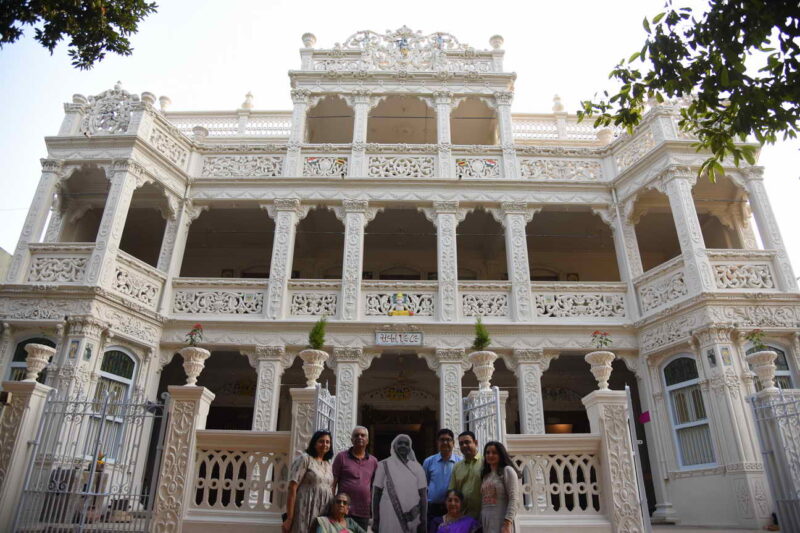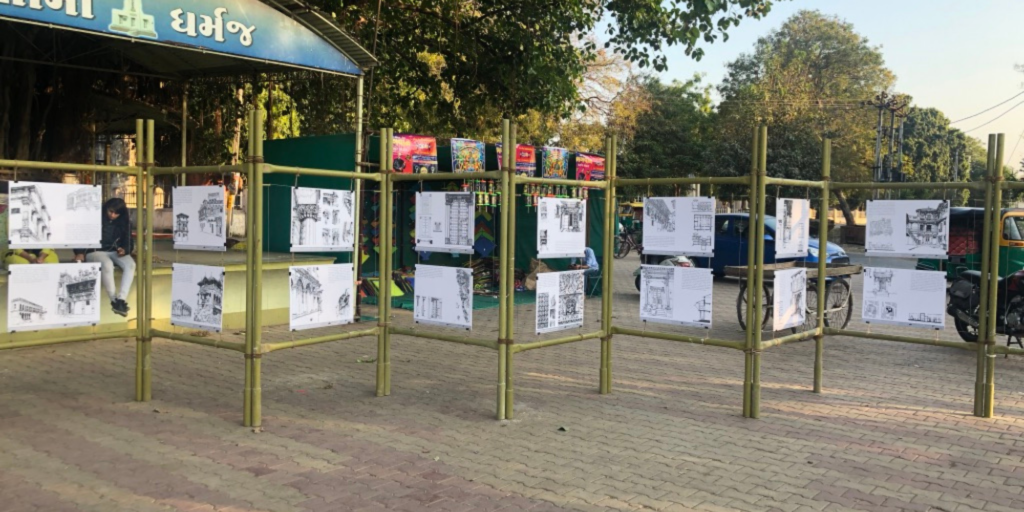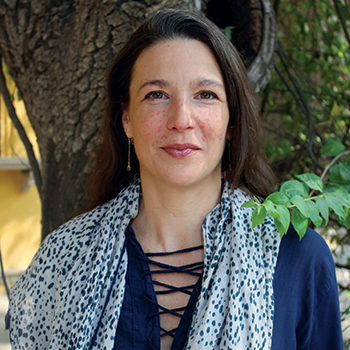
A long term approach to contextualise a cultural legacy and bring contemporary character through building the Indo-Africa diasporic, cultural and artistic interconnects. Continue to research and educate a younger generation on the characteristics of the Patidar Houses through heritage walks to build sustainabile cultural tourism to the village through engaged activities.
Avichal Heritage Initiative is a movement conceptualised to implement engagement of the NRI diaspora and the next generation through the rebuilding and repurposing of heritage homes in Dharmaj. Rhodesia House was chosen to tell the story of the Indo-African heritage in Dharmaj. Tracing Routes was conceptualised by The Kala Chaupal Trust in collaboration with The Avichal Heritage Initiative to populate the forgotten stories of Patidars and their India & Global impact through a three day programme around ‘Dharmaj Day’.
Mapping the early Patridars, their homes, and their journeys through curated walks in the Dharmaj Village. Explored the socio-cultural contexts of immigrants to Africa and other continents through artist invitations and residencies for permanent/temporary exhibitions.
The Patidars of Dharmaj have a very thorough knowledge of agriculture. The town is not only agricultural, but industrial too. Many migrated to countries as far as Southern Africa, East Africa, UK, Fiji, and Japan in the late 1800s and then to the USA, Canada, Australia in the 1900s. The Patidars of Dharmaj took on a leading role in the Independence Movement. They provided shelter to the freedom fighters. The Patidars built homes back in Dharmaj.

Women in Migration’ is an archival narration of Chanchalben’s journey from Gujrat to Zimbabwe in the Kumshuma Cafe at Rhodesia House, Dharmaj, Gujarat. The archival is in perspective of woman leadership in offshore socio-cultural preservation.
The socio-political-economic times when Chanchalben first moved to Rhodesia, the now Zimbabwe were changing rapidly influenced by multiple external factors. She was at the time among only 150-200 women of Indian origin in British Central Africa/Rhodesia. While she persevered in the conservative role of wife and mother it is important to lay cognisance to her strength of spirit in the changing landscapes and situations of both India and Africa.
‘The migration of Indians to the various countries of Southern Africa took place at different times, for different reasons along different routes. Gradually, countries in the region experienced the settlement of Indians who contributed extensively in diverse areas of activity in their adopted homes. Indian women, along with their menfolk, actively participated in various local sectors that helped them establish a firm footing in the new countries.
Even during the early period in South Africa, Indian women took active part in politics aside from their involvement in the economic sector.’

Premila Singh is an Indian artist and an author who was based in South Africa for over 20 years (1992-2012). She entered South Africa the year Nelson Mandela became President and is very familiar with the Indian diaspora in Southern Africa. Premila Singh engaged in reading from her book ‘A Country Forgotten’ on Zimbabwe and an exhibition of artworks painted during her stay in South Africa.

Ana Bloom , is a French artist, photographer, art director. She is the daughter of a political refugee from Ukraine-Russia, Cuba, America and a french mother. She was brought up in a cosmopolitan and universalist environment. Since her childhood, she practice photography and various forms of Arts. Her photographic installation ‘SOUFFLES, BREATH was installed on the second floor of Rhodesia House.
Know more about the artwork and the artist, www.anabloom.com

Atul Bhalla completed his bachelor’s in fine arts from the College of Art, University of Delhi, and his master’s in fine arts from the School of Art, Northern Illinois University, USA. Bhalla is a conceptual artist working with environmental issues, particularly those surrounding water, for more than two decades. His work invites audiences to engage directly with urban and metropolitan spaces, and in particular water resources, in his city New Delhi as well as those he visits during the course of international exhibitions and residencies. In his engagement with the eco-politics of water, Bhalla has been pushing for various thematic links through his multifaceted practice. Primarily using photography the artist explores histories and associative meanings of sites of everyday living, building narratives through performance and many times using text as well.
A book on Somabhai Mooljibhai Patel and Chanchalben journey from Dharmaj to Africa was launched at Tracing Ro(u)tes 2020. It encompasses the family history of four generations and the building of Rhodesia House.
The students of Vadodra Design Academy studied the Indo-Sarcenic influence on the Dharmaj Houses through sketch studies and these were displayed in Dharmaj during Tracing Ro(u)tes 2020.
Indo-Saracenic (from Saracen, an archaic name for Muslims used by the British), also known as Indo- Gothic was a style of Architecture used by British Architects in the late 19th century in India. Indo-Saracenic Architecture was an effort to merge British and Indian aspirations after 1858 and to show that how despite being an Imperial power, the British in India were part of the Indian milieu. It also aroused Indian’s interest in their own history. The Indo-Saracenic movement began in the 1870s.
Heritage walks were organised through a collaboration with Centre for Heritage Management, Ahemdabad University. The students, mapped the early Patridars, their homes and their journeys through curated walks in the Dharmaj Village as part of Tracing Ro(u)tes 2020. The students researched the original families, the descendants and stories behind each of the houses.





